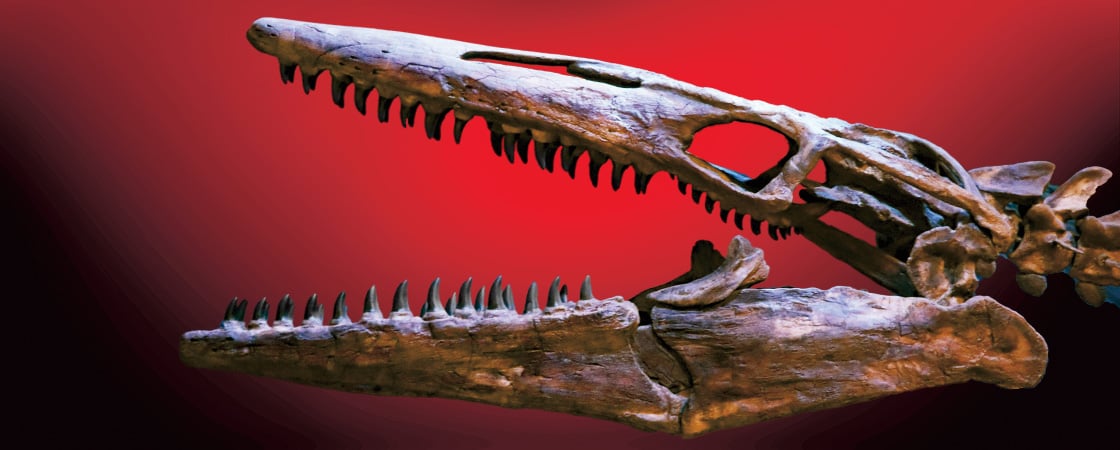You swim in the blue-green waters of a shallow sea. The air above you is thick and heavy. The sun is scorching hot.
Lizard-like creatures the size of small planes zip across the skies. Powerful sea beasts that make sharks look like kittens swim in the waters below. Yet you have no reason to be afraid. You are a monster too.
You are a mighty Ichthyosaurus (IK-thee-uh-SOR-uhs). You lived in the ocean millions of years ago. You’re gigantic, with eyes the size of tennis balls and razor-sharp teeth. Few creatures can match your speed—certainly not the fish and squid you feast on.
But like all living things, you eventually die. You fall to the bottom of the sea. Over millions of years, your flesh rots and your bones turn into rock. All that remains of you is a fossil. Your watery home becomes dry land. You are forgotten.
Until one day a 12-year-old girl on a windy beach digs you up. Her name is Mary Anning. Together, you will change the world.
You swim in the shallow sea. The water is blue green. The air above you is thick and heavy. The sun is sizzling hot.
Creatures like lizards zip across the skies. They are the size of small planes. Powerful sea beasts that make sharks look like kittens swim in the waters below. Yet you are not afraid. You are a monster too.
You are a mighty Ichthyosaurus (IK-thee-uh-SOR-uhs). You lived in the ocean millions of years ago. You’re huge. You have eyes the size of tennis balls. You have razor-sharp teeth. You feast on fish and squid. They cannot match your speed.
But like all living things, you die one day. You fall to the bottom of the sea. Your body rots. Over millions of years, your bones turn to rock. All that remains of you is a fossil. Your watery home becomes dry land. You are forgotten.
Until one day a 12-year-old girl digs you up on a windy beach. Her name is Mary Anning. Together, you will change the world.
Imagine you lived millions of years ago. You swim in the blue ocean. Giant creatures fly above you. Sea beasts swim below you. You are a huge monster called an Ichthyosaurus (IK-thee-uh-SOR-uhs). You have sharp teeth. Your eyes are the size of tennis balls!
But one day you die. Your body falls to the bottom of the sea. Millions of years pass. You turn into a fossil.
Then a 12-year-old girl digs you up. Her name is Mary Anning. Together, you will change the world.

